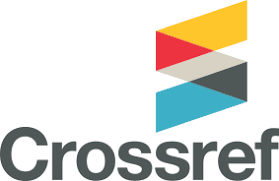Comparative Analysis of YOLOv8 and HSV Methods for Traffic Density Measurement
Abstract
Traffic density measurement is a critical component in traffic management and urban planning. This study addresses the challenge of accurately measuring traffic density by comparing the performance of the YOLOv8 segmentation method with the traditional HSV method. At the beginning of the abstract, we clearly present the problem of accurately measuring traffic density. The primary objective is to highlight the strengths and limitations of each method in terms of accuracy and reliability in traffic density estimation. The choice of segmenting the asphalt area rather than vehicle objects is justified by the need to understand how different segmentation approaches affect traffic density measurements. The HSV method involves converting images to the HSV color space, creating masks for specific areas, and measuring traffic density based on the asphalt area. This method, while straightforward, may not accurately capture the dynamic nature of vehicle movement. In contrast, the YOLOv8 segmentation method utilizes a deep learning approach to detect and segment vehicles, providing potentially more precise measurements. Experimental results from three locations demonstrate varying levels of traffic density. The YOLOv8 method results in a graph with a wavy pattern, reflecting the more detailed detection of vehicles. Conversely, the HSV method produces a linear pattern, indicating a more consistent but potentially less detailed measurement. Quantitative analysis shows that Location 2 has a higher traffic density compared to Locations 1 and 3, as indicated by the average number of detected vehicles per frame. This study provides a comprehensive understanding of the differences between HSV and YOLOv8 segmentation methods for traffic density measurement. The findings suggest that while YOLOv8 offers more detailed and dynamic detection, the HSV method provides a simpler yet effective approach for certain applications.
Downloads
References
[2] A. Stanley and R. Munir, “Vehicle Traffic Volume Counting in CCTV Video with YOLO Algorithm and Road HSV Color Model-based Segmentation System Development,” Proceeding 15th Int. Conf. Telecommun. Syst. Serv. Appl. TSSA 2021, vol. C, pp. 1–5, 2021, doi: 10.1109/TSSA52866.2021.9768231.
[3] “Korlantas Polri - Informasi Lalu Lintas Indonesia.” Accessed: Dec. 21, 2022. [Online]. Available: https://korlantas.polri.go.id/
[4] J. de Winter, J. Hoogmoed, J. Stapel, D. Dodou, and P. Bazilinskyy, “Predicting perceived risk of traffic scenes using computer vision,” Transp. Res. Part F Traffic Psychol. Behav., vol. 93, no. August 2022, pp. 235–247, 2023, doi: 10.1016/j.trf.2023.01.014.
[5] M. Michael, F. Tanoto, E. Wibowo, F. Lutan, and A. Dharma, “Pengenalan Plat Kendaraan Bermotor dengan Menggunakan Metode Template Matching dan Deep Belief Network,” MATRIK J. Manajemen, Tek. Inform. dan Rekayasa Komput., vol. 19, no. 1, pp. 27–36, 2019, doi: 10.30812/matrik.v19i1.475.
[6] W. Ci, T. Xu, R. Lin, and S. Lu, “A Novel Method for Unexpected Obstacle Detection in the Traffic Environment Based on Computer Vision,” Appl. Sci., vol. 12, no. 18, 2022, doi: 10.3390/app12188937.
[7] H. S. Bedi, P. K. Malik, R. Singh, R. Singh, and N. Bisht, “Traffic Surveillance Using Computer Vision and Deep Learning Methods,” IOP Conf. Ser. Earth Environ. Sci., vol. 1285, no. 1, 2024, doi: 10.1088/1755-1315/1285/1/012018.
[8] I. M. Sukarsa, N. Kadek, D. Rusjayanthi, M. Srinitha, M. Utami, and N. Wayan, “The Use of XGBoost Algorithm to Analyse the Severity of Traffic Accident Victims,” LONTAR Komput., vol. 14, no. 1, pp. 36–47, 2023.
[9] F. Rofii, G. Priyandoko, M. I. Fanani, and A. Suraji, “Peningkatan Akurasi Perhitungan Jumlah Kendaraan dengan Membangkitkan Urutan Identitas Deteksi Berbasis Yolov4 Deep Neural Networks,” TEKNIK, vol. 42, no. 2, pp. 169–177, Aug. 2021, doi: 10.14710/teknik.v42i2.37019.
[10] M. Boudissa, H. Kawanaka, and T. Wakabayashi, “Semantic Segmentation of Traffic Landmarks Using Classical Computer Vision and U-Net Model,” J. Phys. Conf. Ser., vol. 2319, no. 1, 2022, doi: 10.1088/1742-6596/2319/1/012031.
[11] W. Riyadi and J. Jasmir, “Performance Prediction of Airport Traffic Using LSTM and CNN-LSTM Models,” MATRIK J. Manajemen, Tek. Inform. dan Rekayasa Komput., vol. 22, no. 3, pp. 627–638, 2023, doi: 10.30812/matrik.v22i3.3032.
[12] Muhamad Irfan Hermawan., Iwan Iwut Tritoasmoro., and Nur Ibrahim., “Pengaturan Lampu Lalu Lintas Berdasarkan Kepadatan Kendaraan Menggunakan Metode YOLO,” Feb. 2021.
[13] M. V. Yashina, A. S. Bugaev, I. A. Kuteynikov, and M. A. Kuznetsov, “Evaluation of Recovery Accuracy of Vehicles Flow Characteristics by Video Sensor Views,” 2022 Syst. Signals Gener. Process. F. Board Commun. SOSG 2022 - Conf. Proc., pp. 1–4, 2022, doi: 10.1109/IEEECONF53456.2022.9744271.
[14] K. Darwhekar, A. Patil, S. Ghodke, R. Bawkar, and S. Rudrawar, “Computer Vision based Intelligent Traffic Management System,” 6th Int. Conf. Electron. Commun. Aerosp. Technol. ICECA 2022 - Proc., no. Iceca, pp. 1051–1056, 2022, doi: 10.1109/ICECA55336.2022.10009105.
[15] I. Imanuddin, F. Alhadi, R. Oktafian, and A. Ihsan, “Deteksi Mata Mengantuk pada Pengemudi Mobil Menggunakan Metode Viola Jones,” MATRIK J. Manajemen, Tek. Inform. dan Rekayasa Komput., vol. 18, no. 2, pp. 321–329, 2019, doi: 10.30812/matrik.v18i2.389.
[16] A. Kurniasari and Jalinas, “Pendeteksian Tingkat Kepadatan Jalan Menggunakan Metode Canny Edge Detection,” J. Ilm. Teknol. dan Rekayasa, vol. 25, no. 3, pp. 239–248, 2020, doi: 10.35760/tr.2020.v25i3.3419.
[17] M. Hasan, S. Das, and M. N. T. Akhand, “Estimating Traffic Density on Roads using Convolutional Neural Network with Batch Normalization,” 2021 5th Int. Conf. Electr. Eng. Inf. Commun. Technol. ICEEICT 2021, pp. 1–6, 2021, doi: 10.1109/ICEEICT53905.2021.9667860.
[18] M. Umair Arif, M. U. Farooq, R. H. Raza, Z. U. A. Lodhi, and M. A. R. Hashmi, “A Comprehensive Review of Vehicle Detection Techniques under Varying Moving Cast Shadow Conditions Using Computer Vision and Deep Learning,” IEEE Access, vol. 10, no. October, pp. 104863–104886, 2022, doi: 10.1109/ACCESS.2022.3208568.
[19] M. Umair, M. U. Farooq, R. H. Raza, Q. Chen, and B. Abdulhai, “Efficient Video-based Vehicle Queue Length Estimation using Computer Vision and Deep Learning for an Urban Traffic Scenario,” Processes, pp. 1–20, 2021.
[20] K. H. Nam Bui, H. Yi, and J. Cho, “A multi-class multi-movement vehicle counting framework for traffic analysis in complex areas using CCTV systems,” Energies, vol. 13, no. 8, 2020, doi: 10.3390/en13082036.
[21] S. Javadi, Computer Vision for Traffic Surveillance Systems Methods and Applications. 2021.
[22] R. J. A, F. Utaminingrum, and A. Setia, “Helmet Monitoring System using Hough Circle and HOG based on KNN,” LONTAR Komput., vol. 12, no. 1, pp. 13–23, 2021.
[23] Z. Liu, C. Shen, X. Fan, G. Zeng, and X. Zhao, “Scale-aware limited deformable convolutional neural networks for traffic sign detection and classification,” IET Intell. Transp. Syst., vol. 14, no. 12, pp. 1712–1722, 2020, doi: 10.1049/iet-its.2020.0217.
[24] X. Chen, Y. Chen, and G. Zhang, “A computer vision algorithm for locating and recognizing traffic signal control light status and countdown time,” J. Intell. Transp. Syst. Technol. Planning, Oper., vol. 25, no. 5, pp. 533–546, 2021, doi: 10.1080/15472450.2021.1871611.
[25] A. A. Mahersatillah, Z. Zainuddin, and Y. Yusran, “Unstructured Road Detection and Steering Assist Based on HSV Color Space Segmentation for Autonomous Car,” 2020 3rd Int. Semin. Res. Inf. Technol. Intell. Syst. ISRITI 2020, pp. 688–693, 2020, doi: 10.1109/ISRITI51436.2020.9315452.
[26] D. Reis, J. Kupec, J. Hong, and A. Daoudi, “Real-Time Flying Object Detection with YOLOv8,” 2023, [Online]. Available: http://arxiv.org/abs/2305.09972
[27] R. Ekhlakov and N. Andriyanov, “Multicriteria Assessment Method for Network Structure Congestion Based on Traffic Data Using Advanced Computer Vision,” Mathematics, vol. 12, no. 4, 2024, doi: 10.3390/math12040555.
[28] T. Wu and Y. Dong, “YOLO-SE: Improved YOLOv8 for Remote Sensing Object Detection and Recognition,” Appl. Sci., vol. 13, no. 24, p. 12977, 2023, doi: 10.3390/app132412977.
[29] S. Jeong, S. Roh, and K. Sohn, “Multi-Regime Analysis for Computer Vision- Based Traffic Surveillance Using a Change-Point Detection Algorithm,” IEEE Access, vol. 9, pp. 40980–40995, 2021, doi: 10.1109/ACCESS.2021.3064603.
[30] K. H. K. Manguri and A. A. Mohammed, “A Review of Computer Vision–Based Traffic Controlling and Monitoring,” UHD J. Sci. Technol., vol. 7, no. 2, pp. 6–15, 2023, doi: 10.21928/uhdjst.v7n2y2023.pp6-15.

This work is licensed under a Creative Commons Attribution 4.0 International License.
The Authors submitting a manuscript do so on the understanding that if accepted for publication, the copyright of the article shall be assigned to Jurnal Lontar Komputer as the publisher of the journal. Copyright encompasses exclusive rights to reproduce and deliver the article in all forms and media, as well as translations. The reproduction of any part of this journal (printed or online) will be allowed only with written permission from Jurnal Lontar Komputer. The Editorial Board of Jurnal Lontar Komputer makes every effort to ensure that no wrong or misleading data, opinions, or statements be published in the journal.
 This work is licensed under a Creative Commons Attribution 4.0 International License.
This work is licensed under a Creative Commons Attribution 4.0 International License.























